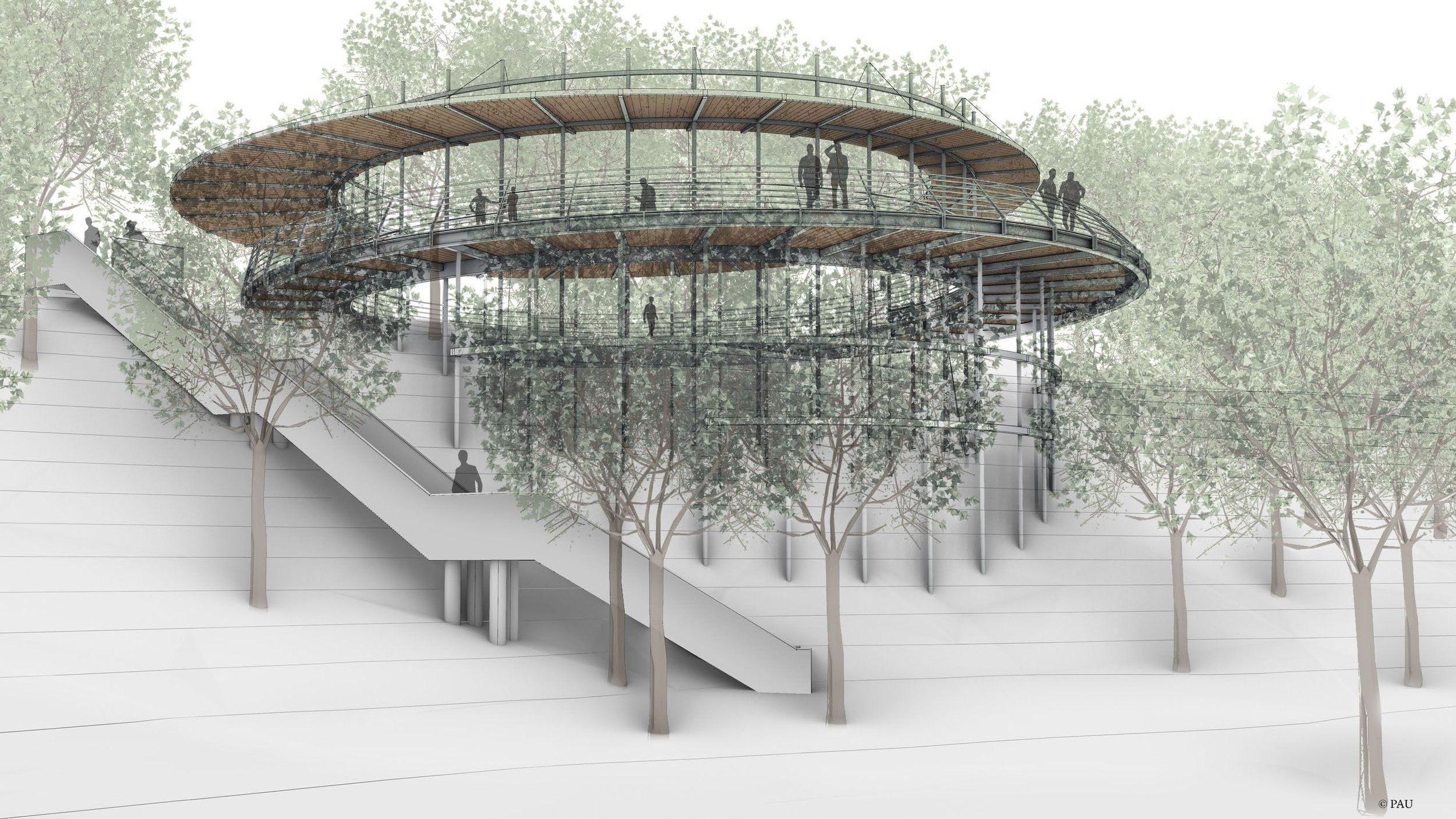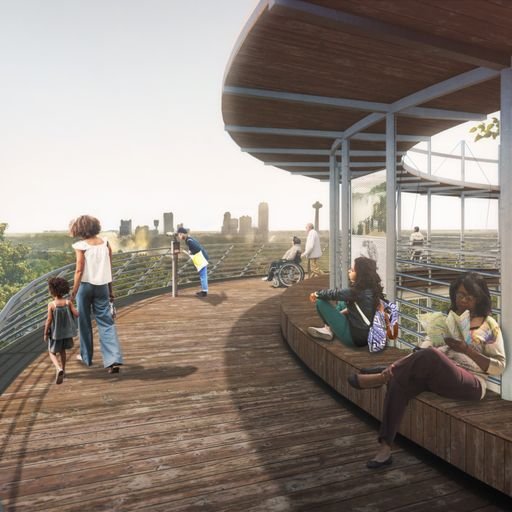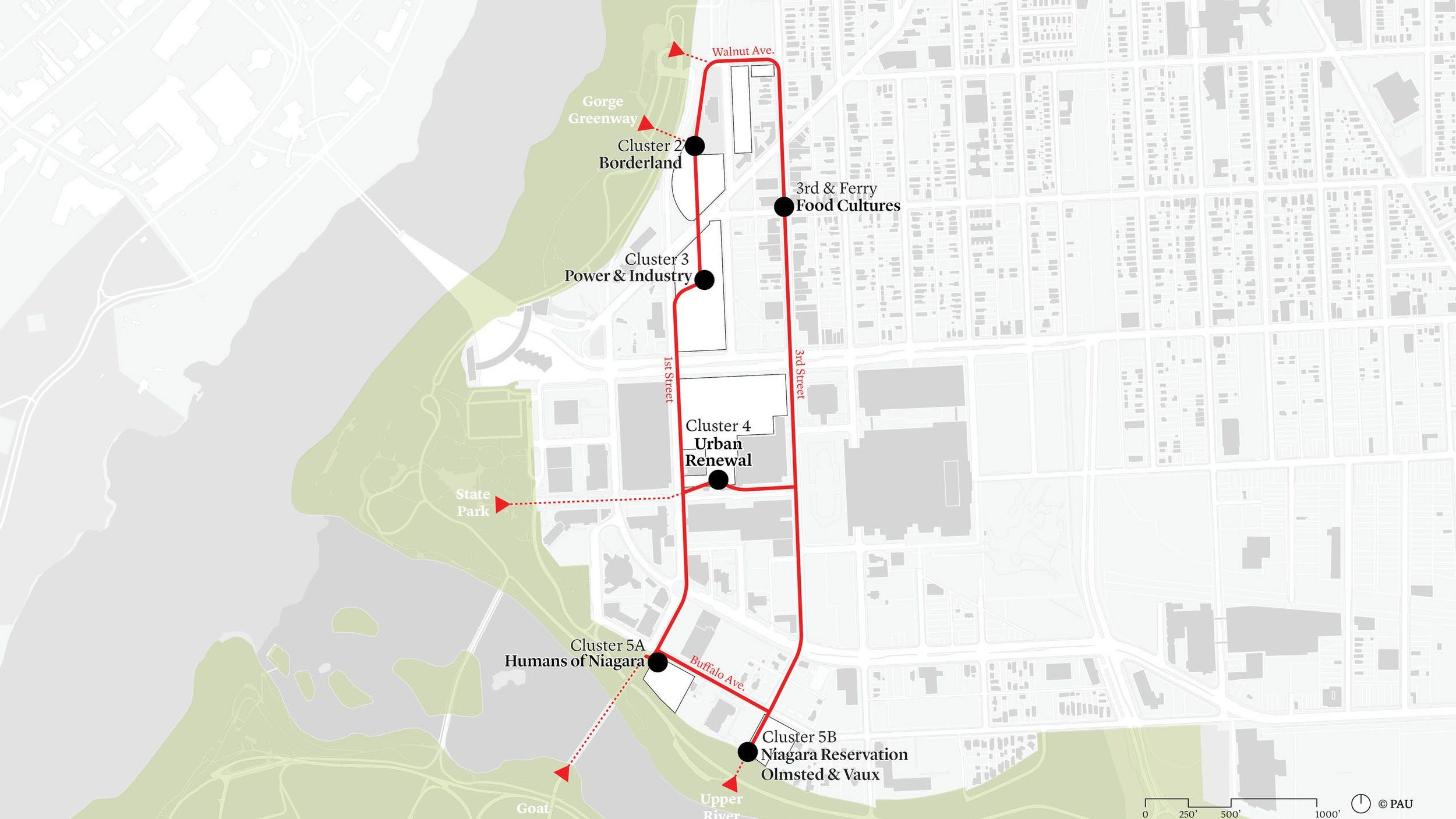A new look for Niagara Falls
Practice for Architecture and Urbanism (PAU) is leading the design for the Niagara Falls Heritage Gateways Project, strengthening the Downtown Niagara Falls and Niagara Falls State Park connection.
Niagara Falls is the oldest and arguably most famous state park in the USA, attracting millions of visitors annually, but its adjacent downtown has diminished in recent decades.
PAU will construct an observation deck along the border of Niagara Falls State Park.
This $12 million project adds to the planned redevelopment of several vacant and under-utilised state-owned properties PAU developed in 2021 with the USA Niagara Development Corporation (USAN).
“We are forging a new path forward for Niagara Falls- making targeted investments that will help draw tourists and transform the community,” says New York Governor Kathy Hochul. “The Niagara Heritage Gateway project will bring exciting new developments to the city’s downtown, attracting new visitors, stimulating the local economy and making the community an even better place to live.”
PAU’s design for the Niagara Falls Heritage Gateways Project.
Four public gateway features focus on the northern and southern ends of the proposed Downtown Niagara Falls Heritage Path.
PAU will create a pocket park at the corner of Buffalo Avenue and 1st Street, and transform DiFranco Park into a multi-use pavilion perfect for performances and public gatherings. They will also redevelop a stretch of the historic Niagara Falls Power Company’s hydraulic canal into a pedestrian walkway, demonstrating the history of large-scale electricity production and its social effects.
Niagara Falls is the oldest state park in the USA.
PAU will construct an observation deck along the border of Niagara Falls State Park, linked to the park by a stairway and accessible from Buffalo Avenue. The deck will offer panoramic views of the American Rapids and Goat Island, as well as outdoor seating, while preserving existing tree coverage.
Vishaan Chakrabarti, Founder and Creative Director of PAU, says the project is “a chance to demonstrate how thoughtful design can restore rather than remake our cities. It is by building on a foundation of shared history- instead of trying to reinvent cities from scratch- that we truly strengthen and benefit communities. Public infrastructure is at the centre of successful urbanism - we applaud New York State for championing public spaces and architecture that connect us to our narratives, to our environment, and to one another.”
The project is expected to be completed in 2024.
The project adds to the planned redevelopment of several vacant and under-utilised state-owned properties PAU developed in 2021 with the USA Niagara Development Corporation (USAN).



